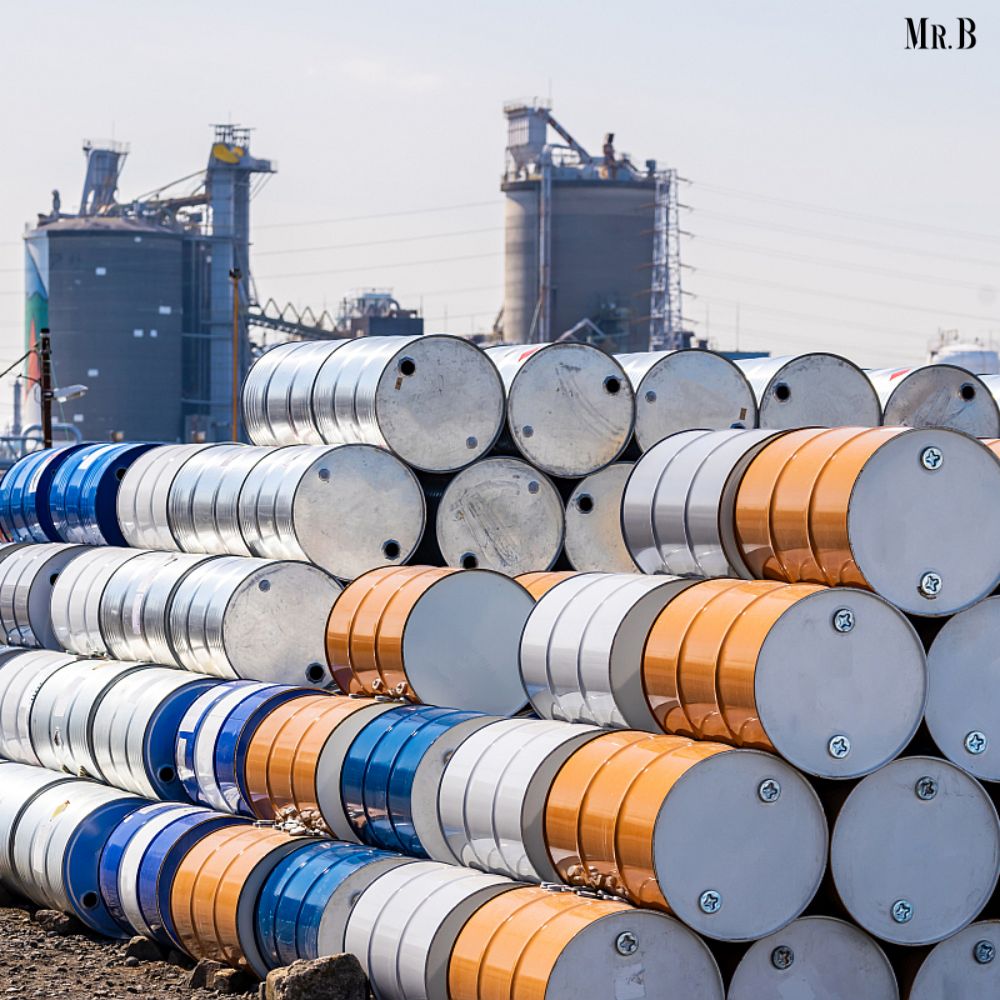In the realm of commodities trading, few instruments hold as much sway and complexity as crude oil futures contracts. These financial tools play a pivotal role in global markets, influencing everything from energy prices to economic policies. Understanding their nuances, strategies, and risks is crucial for investors, traders, and policymakers alike.
Understanding Crude Oil Futures Contracts
Crude oil futures contracts represent agreements to buy or sell a specified quantity of crude oil at a predetermined price on a future date. These contracts are standardized and traded on futures exchanges such as the New York Mercantile Exchange (NYMEX) and the Intercontinental Exchange (ICE). They serve as a crucial mechanism for hedging against price fluctuations and speculating on future price movements.
Contract Specifications
Each crude oil futures contract has specific parameters, including:
1. Contract Size:
Typically, one contract represents 1,000 barrels of crude oil.
2. Delivery Date:
Contracts may specify the type of crude oil (e.g., West Texas Intermediate or Brent crude).
3. Grade of Oil:
The specified date in the future when the contract expires, and delivery or settlement must occur.
4. Tick Size:
The minimum price movement allowed for the contract.
5. Margin Requirements:
Initial and maintenance margins required to enter and hold positions.
Market Participants
Various market participants engage in crude oil futures trading:
1. Producers:
Oil companies use futures contracts to hedge against price volatility, ensuring stable revenue streams.
2. Consumers:
Airlines, shipping companies, and other energy-dependent industries hedge against price spikes.
3. Speculators:
Traders seeking profit from price movements without physical delivery of oil.
4. Investors:
Institutional and retail investors include crude oil futures in diversified portfolios for risk management or speculative purposes.
Strategies in Crude Oil Futures Trading
1. Hedging:
Producers and consumers use futures contracts to mitigate price risk. A producer, anticipating lower prices, may sell futures contracts to lock in a favorable price. Conversely, a consumer fearing price hikes can buy futures contracts to secure supply at a fixed cost.
2. Speculation:
Traders speculate on price movements without intent for physical delivery. Long positions (buying contracts) anticipate price rises, while short positions (selling contracts) bet on price declines.
3. Spread Trading:
Involves simultaneously buying and selling related contracts to profit from price differentials between them, such as different delivery months or oil grades.
4. Options Trading:
Options on crude oil futures contracts grant the right (but not obligation) to buy (call option) or sell (put option) contracts at a specified price (strike price) by a certain date (expiration).
Factors Influencing Crude Oil Futures Contracts Prices
1. Supply and Demand:

Fundamental factors such as production levels, geopolitical tensions, and economic growth heavily influence oil prices.
2. OPEC Policies:
The Organization of the Petroleum Exporting Countries (OPEC) and its allies’ decisions on production quotas impact global supply and prices.
3. Macroeconomic Indicators:
Economic data like GDP growth, employment rates, and inflation can signal demand changes and affect oil prices.
4. Currency Movements:
Oil prices are denominated in U.S. dollars, so currency fluctuations can influence global oil demand and prices.
5. Geopolitical Events:
Conflicts, sanctions, and political unrest in oil-producing regions can disrupt supply and lead to price spikes.
Risks Associated with Crude Oil Futures Contracts
1.Price Volatility:
Crude oil prices can experience sharp fluctuations due to geopolitical events, economic indicators, and supply-demand imbalances.
2. Leverage Risk:
Futures trading involves leveraging capital, amplifying gains but also increasing potential losses.
3. Market Risks:
Liquidity constraints, market manipulation, and sudden news events can impact futures prices unexpectedly.
4. Regulatory Risks:
Changes in regulations governing commodities trading or speculation can affect market dynamics and participant strategies.
5. Counterparty Risks:
Default risks from counterparties failing to meet obligations can disrupt trading and investment strategies.
Tips for Successful Crude Oil Futures Trading
1. Educate Yourself:
Understand market dynamics, contract specifications, and trading strategies before engaging in futures trading.
2. Risk Management:
Use stop-loss orders, position sizing, and diversification to manage risk exposure.
3. Stay Informed:
Monitor global economic indicators, geopolitical events, and industry news affecting oil prices.
4. Technical Analysis:
Use technical tools like charts, indicators, and trend analysis to identify potential entry and exit points.
5. Adaptability:
Be flexible and adjust strategies based on changing market conditions, news developments, and risk assessments.
Market Trends and Outlook

Recent years have seen notable trends and shifts in the crude oil futures contracts, reflecting broader economic, geopolitical, and environmental influences. Understanding these trends can provide valuable insights for market participants and observers.
1. Transition to Renewable Energy:
The global push for cleaner energy sources has led to increased focus on renewable energy technologies such as solar, wind, and electric vehicles. This transition has implications for long-term oil demand forecasts, impacting oil prices and futures market dynamics.
2. Geopolitical Dynamics:
Geopolitical tensions in key oil-producing regions such as the Middle East, Russia, and Venezuela continue to influence supply disruptions and price volatility. Changes in political alliances, sanctions, and conflicts can create sudden market shifts affecting crude oil futures prices.
3. Climate Change Policies:
Heightened awareness of climate change and sustainability has prompted governments and organizations worldwide to implement policies favoring lower carbon emissions. This shift can impact energy consumption patterns, affecting oil demand and pricing trends.
4. Technological Advancements:
Innovations in extraction technologies, such as shale oil production in the United States, have altered global supply dynamics. Advances in transportation, storage, and refining technologies also influence market efficiencies and price structures.
5. Demand-Supply Balance:
Fluctuations in global economic growth, industrial activities, and transportation sectors directly impact oil demand. Supply disruptions, inventory levels, and production quotas from major oil-producing nations like OPEC members and non-OPEC players also shape market sentiments and pricing trends.
Emerging Opportunities and Challenges
Despite ongoing transitions and uncertainties, the crude oil futures market presents both opportunities and challenges for participants.
1. Renewables Integration:
As renewable energy technologies advance and gain market share, opportunities arise for energy companies to diversify portfolios and integrate renewables with traditional oil operations. This transition requires strategic planning, investment in new technologies, and risk management strategies to navigate evolving market dynamics.
2. Economic Recovery and Demand Resurgence:
Post-pandemic economic recoveries in major economies can stimulate energy demand, supporting oil prices an futures market activities. However, fluctuations in economic indicators, inflationary pressures, and supply-chain disruptions pose challenges and uncertainties.
3. Evolving Regulations:
Regulatory frameworks governing energy markets, emissions trading, and carbon pricing mechanisms are evolving globally. Compliance with environmental standards, reporting requirements, and adaptation to regulatory changes become critical considerations for industry players and investors in oil futures markets.
4. Supply Chain Resilience:

Recent supply chain disruptions, geopolitical tensions, and natural disasters highlight the importance of supply chain resilience and contingency planning for oil producers, traders, and consumers. Diversification of supply sources, strategic inventories, and risk hedging strategies become key strategies in navigating uncertainties.
Technological Innovations:
Advancements in data analytics, artificial intelligence, and blockchain technologies are transforming trading platforms, risk management tools, and market transparency in commodities trading, including crude oil futures. Embracing these innovations can enhance efficiency, reduce operational risks, and improve decision-making processes for market participants.
Conclusion: Navigating the Future
As the global economy evolves, energy markets undergo transformations, and environmental priorities reshape industry landscapes, navigating the future of crude oil futures contracts requires adaptability, foresight, and strategic agility. Market participants must stay attuned to geopolitical developments, regulatory shifts, technological advancements, and sustainability imperatives shaping the energy sector’s trajectory.
By leveraging market insights, adopting diversified strategies, embracing innovation, and prioritizing risk management practices, investors, traders, and energy industry stakeholders can navigate the complexities of crude oil futures contracts effectively. Balancing short-term opportunities with long-term sustainability goals will be key in fostering resilience and capturing value in an ever-evolving energy landscape.
Curious to learn more? Explore this Article on: Mr. Business Magazine







